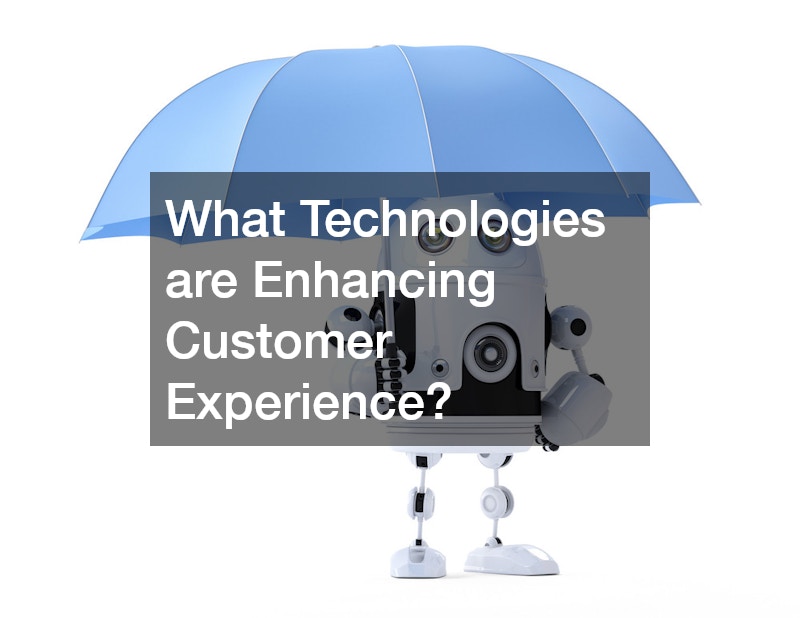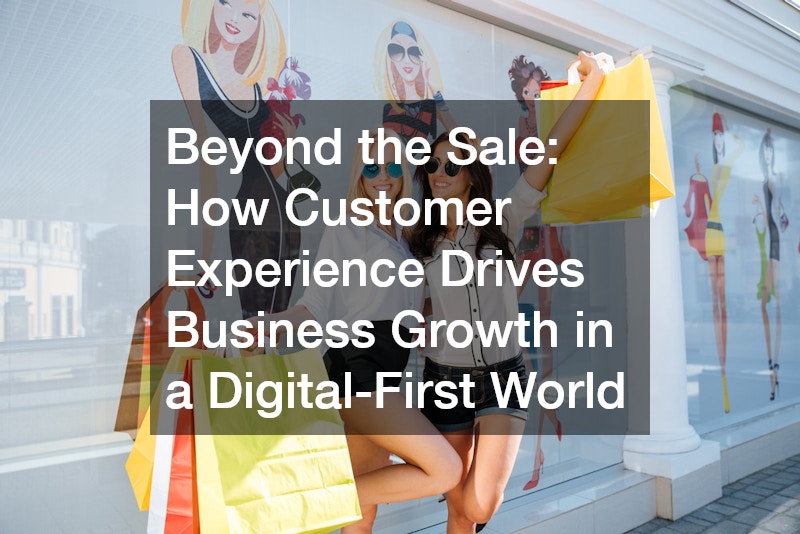Beyond the Sale: How Customer Experience Drives Business Growth in a Digital-First World
In today’s digital-first environment, the paradigm shift from product-centric to customer-centric strategies underscores the importance of customer experience as a crucial driver of business growth. Businesses that harness the transformative power of exceptional customer experiences not only enhance customer satisfaction but also fuel sustainable growth. As companies navigate this digital landscape, the focus on bespoke, customer-centric interactions emerges as a key differentiator.
What is the Importance of Customer Experience in a Digital-First World?
The Shift from Product-Centric to Customer-Centric
Historically, businesses have emphasized producing and selling superior products to capture market share. However, as markets evolve and consumer expectations shift, there’s a notable pivot towards prioritizing the customer’s experience. This transition from focusing solely on products to creating meaningful customer journeys reflects a deeper understanding of how customer experience drives business growth.
In reorienting their focus, companies are acknowledging that superior products are no longer enough to secure competitive advantage. Today, the emphasis falls on enhancing every touchpoint in the customer journey to foster deeper loyalty and engagement. This strategic shift demands enterprises to rethink and restructure their operations around customer insights and feedback.
The transition involves businesses deploying new strategies that improve the overall customer experience, thereby setting a new standard for industry practices. By prioritizing customer satisfaction in this digital age, businesses can cultivate enduring relationships that translate directly into growth. It underscores the necessity of moving beyond traditional practices to address evolving consumer needs more holistically.
The Impact on Brand Loyalty and Retention
Exceptional customer experiences play a pivotal role in enhancing brand loyalty and increasing retention rates. When customers feel valued and understood, they are more likely to remain loyal to a brand. This loyalty, in turn, significantly contributes to how customer experience drives business growth by ensuring a stable revenue stream.
In the fiercely competitive digital landscape, retaining existing customers is as important, if not more, than acquiring new ones. Brands that consistently deliver exceptional experiences often see increased customer retention, reducing churn rates. This not only maximizes lifetime customer value but also converts loyal customers into brand advocates.
By focusing on enhancing loyalty and customer retention, businesses can craft strategies that resonate with their customers’ evolving needs and preferences. As a result, investing in customer experience not only fortifies the relationship between a brand and its clientele but also provides a significant competitive edge. Through tools like personalized communications and attentive customer service, businesses can effectively retain their audience.
How Can Businesses Effectively Implement Customer Experience Strategies?

Understanding Customer Needs and Expectations
To effectively implement customer experience strategies, businesses must first gain an in-depth understanding of their customers’ needs and expectations. Collecting and analyzing customer data plays a crucial role in tailoring experiences that resonate with the target audience. Through methods such as surveys, feedback loops, and analytical tools, businesses can gather insightful data that helps shape their approaches.
By employing data analytics, companies can uncover patterns and predict future customer preferences, enabling proactive adjustments in offerings. This alignment with customer expectations is at the heart of developing successful customer experience strategies. It ensures that businesses are not only meeting customer’s current desires but actively anticipating future ones.
Furthermore, by understanding their audience better, businesses can depart from a one-size-fits-all approach, crafting unique experiences tailored to individual customer needs. This personalization fosters a strong sense of belonging and satisfaction among customers, enhancing loyalty and driving business growth. Knowing your customer intimately remains a foundational pillar in consumer-centric strategy development.
The Role of Technology and Innovation
In the digital-first world, technology and innovation are indispensable in crafting outstanding customer experiences. Tools such as Customer Relationship Management (CRM) systems and cloud-based infrastructures facilitate seamless interactions across various touchpoints. Additionally, innovations like chatbots and AI-driven analytics enhance customer service by providing immediate support and valuable predictions.
Businesses are leveraging technology to streamline processes, seamlessly transitioning from traditional methods to more intuitive solutions. For instance, AI’s ability to process and analyze vast datasets allows businesses to predict customer preferences with remarkable accuracy. Technology not only supports operational scalability but also empowers brands to deliver consistently excellent customer experiences.
Innovation unlocks new possibilities for personalization, enabling businesses to curate experiences that reflect individual customer journeys. Through such advancements, companies can capture the attention of tech-savvy consumers while retaining their loyalty attributed to superior experiences. Moreover, the integration of technology within customer strategies can lead to increased operational efficiency, ultimately driving growth.
Training and Empowering Employees
Human interaction remains a vital component of customer experience, underlining the necessity of training and empowering employees. Employees who understand the value of exceptional service delivery become vital ambassadors of a brand’s commitment to customer satisfaction. This underscores the importance of investing in comprehensive training programs that align with customer-centric values.
Effective employee training emphasizes not only technical skills but also soft skills such as empathy and problem-solving, which are critical in handling customer interactions. By empowering employees with the right tools and knowledge, businesses ensure consistent and superior customer interactions. This empowerment translates into increased employee satisfaction and productivity.
Moreover, when employees are given the autonomy to address and resolve customer issues independently, they enhance the overall customer experience. Such empowerment is crucial in fostering an environment where employees are motivated to exceed customer expectations, thereby boosting customer satisfaction and driving business growth. A committed and knowledgeable workforce remains central to any successful customer experience strategy.
What Technologies are Enhancing Customer Experience?

Artificial Intelligence and Machine Learning
Artificial Intelligence (AI) and Machine Learning (ML) are revolutionizing the way businesses interact with their customers. These technologies enable personalized experiences by quickly analyzing customer data to identify patterns and preferences. Through AI-driven insights, companies can tailor their services to meet customer expectations more effectively.
AI and ML facilitate a more dynamic and responsive approach to customer service and engagement. Chatbots, powered by AI, provide immediate assistance and resolve common inquiries, freeing human agents to handle more complex issues. This synergy between technology and human touchpoints highlights the importance of AI and ML in enhancing customer experiences in the digital age.
With the ability to learn and adapt over time, AI and ML present businesses with opportunities to continuously refine their customer interactions. Predictive analytics, another ML application, allows organizations to forecast customer behavior and preemptively address potential issues. This foresight cultivates stronger relationships by ensuring relevant and timely responses, driving growth through satisfied and loyal customers.
Omnichannel Customer Engagement
Omnichannel customer engagement strategies have emerged as essential aspects of delivering consistent and seamless customer experiences. The modern customer interacts with brands across various platforms, and a unified approach ensures coherence across all touchpoints. Whether through social media, email, or in-store visits, every interaction should reinforce the brand’s commitment to superior service.
By employing an omnichannel strategy, businesses can engage customers through their preferred channels, ensuring accessibility and convenience. This approach improves customer satisfaction by providing consistent support and information, regardless of the platform. Companies committed to omnichannel engagement are better positioned to meet the diverse needs of their customers, enhancing loyalty and retention.
Implementing such strategies requires integration of systems and data across platforms, ensuring seamless communication and service delivery. Businesses can therefore provide holistic customer experiences that adapt to the ever-evolving digital landscape. Omnichannel engagement represents a crucial element in how customer experience drives business growth by nurturing relationships through consistent interaction.
Personalization and Predictive Analytics
The advent of personalization and predictive analytics has transformed traditional customer interactions into personalized experiences. By leveraging data analytics, businesses can develop a deep understanding of individual customer preferences and behaviors. This insight allows for meaningful personalization of products and services, enhancing satisfaction and fostering loyalty.
Predictive analytics uses historical data and trends to anticipate customer needs, enabling businesses to offer proactive solutions and personalized engagement. This capability not only improves the overall customer experience but also increases the likelihood of conversion and retention. Personalization thus becomes a vital aspect of how customer experience drives business growth by aligning offerings with unique customer expectations.
The successful application of predictive analytics and personalization strategies relies on robust data collection and analysis frameworks. As businesses harness these technologies, they can more effectively meet the diverse needs of their customers, solidifying their position in competitive markets. The nuanced understanding gained through analytics fosters enduring customer relationships, directly contributing to growth and success.
How Does Customer Experience Drive Business Growth?
From Satisfied Customers to Brand Advocates
Satisfied customers hold the potential to become powerful brand advocates, driving organic business growth through word-of-mouth and social sharing. Advocacy is born from consistently positive experiences that leave customers eager to promote the brand within their network. This recognition underscores how customer experience drives business growth by creating a passionate and vocal customer base.
When customers transition from mere satisfied consumers to vocal advocates, they become valuable assets to a brand’s marketing efforts. Such advocates often provide authentic testimonials and referrals that resonate strongly with potential customers. The influence of brand advocacy extends a business’s reach beyond traditional marketing channels, amplifying its message throughout diverse communities.
Investing in customer experience can, therefore, produce exponential returns as advocates willingly endorse the brand to others. These advocates often translate into new business opportunities and sustained growth, embodying the tangible impact of a loyal customer base. Their endorsements affirm that businesses committed to exceptional customer experiences not only retain patrons but also acquire new ones through trusted referrals.
Measuring the Impact and ROI of Customer Experience
Businesses that invest in customer experience initiatives seek to understand their impact and determine the return on investment (ROI) they yield. Methods such as Net Promoter Score (NPS), customer satisfaction surveys, and retention metrics provide insight into how customer experience influences growth and profitability. These tools help quantify the tangible benefits of enhanced customer engagement.
Evaluating the financial impact of customer experience initiatives also involves analyzing the correlation between improved experiences and key performance indicators like sales revenue and customer lifetime value. A positive relationship often indicates that customer experience efforts are effectively driving business growth. Such assessments are critical in justifying continued investment in customer-centric strategies.
Organizations measuring the success of their customer experience programs gain a comprehensive understanding of their strengths and areas for improvement. By quantifying the ROI of these initiatives, businesses can channel resources toward strategies that maximize customer satisfaction and retention. This focus ensures long-term growth and sustained competitive advantage in the digital-first marketplace.
Competitive Advantage through Differentiation
Amidst the crowded digital marketplace, delivering an exceptional customer experience stands as a powerful differentiator. Companies that consistently exceed customer expectations often distinguish themselves from competitors, garnering a loyal and dedicated following. This differentiation is increasingly recognized as a critical factor in how customer experience drives business growth.
By prioritizing the needs and desires of customers, businesses can cultivate unique brand identities and foster deeper customer connections. These fulfilled promises and esteemed experiences propel brands to the forefront of consumer choice, ultimately enhancing market share. This recognition reinforces the importance of consistent excellence in customer experience as a formidable competitive lever.
The ability to differentiate through superior customer experience enables businesses to attract and retain discerning customers seeking value beyond the product itself. This unique positioning ensures long-term viability and resilience in a rapidly evolving digital business environment. The benefits of differentiation attained through customer experience include increased loyalty and a more robust market presence.
What are Some Challenges in Delivering Exceptional Customer Experience?
Overcoming Digital Fatigue and Information Overload
In the digital age, consumers face the challenge of digital fatigue and information overload, which can hinder engagement and interaction with brands. Businesses must navigate these challenges by delivering targeted and relevant communications that resonate with their audience. This focus on quality over quantity is crucial in bonding with digital-savvy customers.
To combat digital fatigue, brands must ensure that their interactions are purposeful and value-driven, offering customers clear benefits and addressing genuine needs. By understanding and responding to the nuances of digital fatigue, businesses can maintain meaningful relationships that encourage ongoing engagement. This strategy reinforces the critical role of customer experience in sustaining business growth amidst digital challenges.
Moreover, businesses can streamline content delivery by employing personalized marketing approaches that resonate with individual preferences. This personalized attention helps alleviate digital fatigue and information overwhelm, ensuring a positive customer experience. Digital fatigue management emerges as an essential consideration in delivering exceptional service in today’s technology-driven environment.
Balancing Automation and Human Touchpoints
The balance between automation and human interaction remains a prominent challenge in delivering exceptional customer experience. While automation increases efficiency and expedites processes, customers still crave personalized human connections. Striking this balance is pivotal for businesses striving to deliver comprehensive and satisfactory experiences.
Automation can handle routine tasks, freeing human agents to focus on addressing complex issues and building deeper customer relationships. This division of labor allows businesses to maintain efficiency without sacrificing quality in their interactions. Effective integration of automation complements human touchpoints, ensuring that customers receive the best of both worlds during their interactions.
By marrying automation with the warmth of human interaction, businesses can provide not only efficient but also empathetic service. This balance, achieved through careful strategic planning and execution, ensures holistic customer experiences that drive satisfaction and loyalty. Mastery of this equilibrium is key to optimizing customer experiences and securing continued business growth.
Managing Customer Expectations and Feedback
Meeting and managing customer expectations remains an integral challenge in delivering exceptional experiences. As consumer expectations evolve, businesses must remain adaptable, continuously aligning their offerings with customer desires. This dynamic environment underscores the necessity of effectively gathering and responding to feedback.
Feedback, whether positive or constructive, serves as a compass that guides businesses towards improvement and enhancement of service quality. Companies that prioritize acting upon feedback demonstrate their commitment to customer needs and ultimately foster stronger relationships. This responsiveness is vital in how customer experience drives business growth by ensuring that services continue to align with ever-changing expectations.
Timely and appropriate management of feedback surfaces strategies for addressing issues before they escalate, maintaining positive customer sentiment. By fostering an open dialogue with customers, businesses can adapt proactively, preserving trust and loyalty. Such adaptability is an indispensable element in crafting enduring relationships and securing business growth.
Conclusion
In conclusion, the importance of customer experience in driving business growth in a digital-first world cannot be overstated. By transitioning from product-centric to customer-centric models, businesses can secure lasting customer relationships and foster brand loyalty. Embracing technological advancements and addressing challenges such as digital fatigue and maintaining human touchpoints, businesses can continue to enhance customer experiences, ultimately underscoring their significance as key drivers of growth and sustainability in the modern marketplace.
